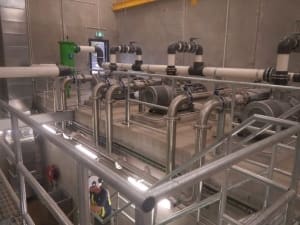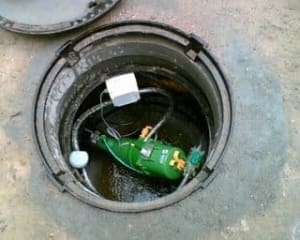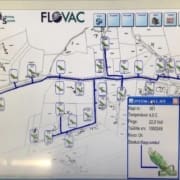What is the Asset Life of a Vacuum Sewer System?
As vacuum sewers are relatively new it is difficult for many engineers to develop good whole of life models when doing a comparative analysis on alternative sewer systems.
 Although vacuum systems are newcomers to the sewerage industry we are seeing some systems just reaching their 50th anniversaries. Materials and designs have changed significantly since the first systems were installed in the mid sixties and although many are still operating they are nearing the end of their design life of the time.
Although vacuum systems are newcomers to the sewerage industry we are seeing some systems just reaching their 50th anniversaries. Materials and designs have changed significantly since the first systems were installed in the mid sixties and although many are still operating they are nearing the end of their design life of the time.
Expectations on asset life have changed industry wide and any sewage infrastructure is expected to last significantly longer. The only national code or standard which stipulates Asset Life is the Australian WSAA Vacuum Sewerage code published in 2004. There are discussions in the WEF Alternate Sewers Guide on operational costs, but these are based on too many old systems to be relevant with modern systems.
The vacuum sewerage system is made up of two main components, the reticulation and the vacuum pump station. many of these components have commonalities with gravity sewers and so their asset life life cycle costs will be very much the same.
To give some idea of a comparison with alternate sewers, grinder pumps are required to have a 25 year asset design life.
 When looking at whole of life costs the primary maintenance item in the vacuum pump station are the vacuum pumps. Liquid ring pumps have lower ongoing costs but use a lot of water which can be expensive. Rotary vane Pumps require oil changes and filter changes and rebuilds are more common.
When looking at whole of life costs the primary maintenance item in the vacuum pump station are the vacuum pumps. Liquid ring pumps have lower ongoing costs but use a lot of water which can be expensive. Rotary vane Pumps require oil changes and filter changes and rebuilds are more common.
Discharge pumps in vacuum sewer systems have lower operational costs as they are a step removed from risks commonly found with gravity sewer systems. Ragging and impacts from rocks are less common due to the collection tank location.
The vacuum interface valve has very few mechanical parts but will require a rebuild once every ten years on average. The parts required for this rebuild will cost less than $100 for each valve per rebuild.
To get a more detailed life cycle analysis of vacuum sewer systems, including their operational costs please contact your nearest Flovac office.










Leave a Reply
Want to join the discussion?Feel free to contribute!